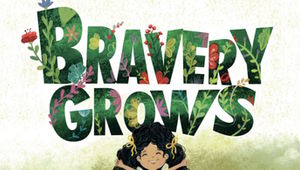Blog
What Are the Signs and Symptoms of Selective Mutism?
What Are the Signs and Symptoms of Selective Mutism?
How to Tell if a Child has Selective Mutism
Selective mutism is an anxiety disorder, usually diagnosed in childhood, in which an individual is nonverbal in certain settings and situations, despite being able to communicate when comfortable or at home. If you know a child who displays the following behaviors, you may know a child with SM:
- Speaking freely at home and with family but being nonverbal due to anxiety in public settings or around strangers
- Being paralyzed with fear or shutting down completely when unable to communicate
Additionally, those with SM may also:
- Struggle to make eye contact when uncomfortable
- Present as behaviorally inhibited
- Rely on pointing, nodding, writing, and other forms of nonverbal communication to answer questions
- Speak through a trusted individual—e.g., whispering an answer to a question to a parent or friend at school
Selective mutism often co-occurs with other forms of anxiety, particularly social anxiety. A child is diagnosed with SM when the pattern of being unable to speak is persistent over time and causes significant impairment in daily functioning. An SM diagnosis is likely if it is difficult for a child to effectively participate in school or form friendships with other students their age due to an inability to speak in public.
Other Behaviors Associated with SM
Along with the regular signs and symptoms of selective mutism outlined above, associated features may include:
- Profound shyness
- Little eye contact when uncomfortable
- Social isolation
- Fear of social embarrassment
- Withdrawal
- Clinging behavior
- Compulsive traits
- Attempts to avoid feared social situations due to anxiety
- Temper tantrums, particularly at home
- Communicating with monosyllabic, short, or monotone utterances
- Communicating in an altered voice
Some of these behaviors may not be present at the onset of SM. At the onset of SM, children may often be motionless and expressionless due to anxiety and then slowly progress from nonverbal and non-communicative stages to communicative and verbal stages in treatment (Shipon-Blum, 2001). Many youth with SM may have difficulty asking to use the restroom resulting in enuretic behaviors. This may also result from co-occurring social anxiety symptoms that can lead to paruresis, or “shy bladder syndrome,” the fear of using public restrooms—often caused by anxiety around making sounds while urinating that others may hear (Stein & Walker, 2002). Other common comorbid issues may include difficulty eating in front of others or difficulty separating from known/comfortable adults such as parents.
Clinical Accounts of Children with Selective Mutism
Observation and clinical accounts of the behavior of children with SM are varied. The majority of children and adolescents with SM are similar to their peers when in a comfortable environment. Parents will often comment about how boisterous, sociable, humorous, inquisitive, talkative, and even bossy and assertive these children are at home. However, the inability to speak in certain social settings differentiates children with SM. When in these settings, children with SM feel like they are continuously “on stage” and experience many of the same symptoms common with stage fright. Some children with SM also report complaints such as nausea, headaches, and stomachaches or may experience vomiting, diarrhea, and an array of other physical symptoms before school or outings.
When in school or other anxiety-provoking settings, some children become much more withdrawn than others. They may be motionless, expressionless, and demonstrate awkward or stiff posture and body language. They may experience emotions including anxiety, sadness, and frustration but be unable to express these emotions visibly. Some children have even been unable to express pain when injured on the playground.
Many children with SM will turn away or hang their heads to avoid eye contact, chew or twirl their hair, or withdraw into a corner. Over time, some children learn to cope and participate in certain social settings by performing nonverbally or by talking quietly to a select few. There are also variations in the degree of outward anxiety or nervousness. Some children display facial expressions and body language resulting from fear or nervousness. Others may appear outwardly calm and be able to communicate nonverbally, which can be misinterpreted as defiant or oppositional since they do not show visible signs of nervousness.
Children with SM tend to have difficulty initiating and may be slow to respond even when it comes to nonverbal communication (e.g., pointing, nodding, shaking head no). This lack of communication may also lead to falsely low test scores and misinterpretation of the child’s cognitive abilities. For these reasons, assessment should be conducted by someone familiar with anxiety and how it may manifest in performance situations such as test-taking.
Social relationships can be difficult for children with SM, although many are well-liked by peers. In many cases, classmates tend to take on a protective role and may try to speak for the child with SM. Even for those fortunate enough to have supportive peers, there is no doubt that SM stifles social growth and development and limits social interaction. In worse-case scenarios, some children are socially isolated, become the victims of teasing and bullying, and are unable to defend themselves. This seems to be more of a problem for older children, and bullying may be more common for boys with SM than for girls.
Causes of Selective Mutism
Today, selective mutism is understood as an anxiety disorder related to shyness, social anxiety, and inhibited temperament. Reports have found that most children with SM are shy, inhibited, and anxious. These reports and clinical experience suggest that SM may be the manifestation of an inhibited temperament, or an inborn personality of mood (Dow et al., 1995). Other evidence suggests that a genetic link exists between children with SM and anxious parents or other family members. Studies show that social phobia, avoidant personality disorder, and parents with a history of SM themselves were more prevalent in families with a child with SM than those without (Black & Uhde, 1995; Chavira et al., 2005; Kristensen, 2001). Additionally, most children with SM also have one or more other anxiety disorders, especially social phobia (Black & Uhde, 1995; Dummit et al., 1997). Other common comorbid anxiety disorders include separation anxiety disorder, generalized anxiety disorder, and specific phobias (Dummit et al., 1997).
Behaviorally inhibited children may also have a decreased threshold of excitability in the almond-shaped area of the brain called the amygdala. The amygdala receives and processes signals of potential threats and sets off a series of reactions that will help individuals protect themselves. In anxious individuals, the amygdala seems to overreact and set off these responses even when the individual is not really in danger. In the case of SM, the anxiety responses are triggered by social interactions and settings where speaking is expected, including school, the playground, or social gatherings. Although there may be no logical reason for fear, the feelings experienced by the child with SM are the same as if an actual threat or danger were present.
Other factors may also play a role in causing SM. A significant number of children with SM also have expressive language disorders and some come from bilingual family environments (Kristensen, 2000; Elizur & Perednik, 2003). While these factors do not cause selective mutism, they can contribute to a child’s anxiety with speaking. The child may become more self-conscious about his or her speaking skills and may have an increased fear of being judged negatively by others.
A stressful environment may also be a risk factor in the development and maintenance of SM. Although earlier reports of SM suggested that a history of abuse and trauma may be associated with the development of SM, there is no evidence that a causal relationship between trauma and SM exists (Black & Uhde, 1995). However, if significant stressors are present, a history of abuse and trauma may contribute to the SM by exacerbating the child’s already-present anxiety.
Selective Mutism Resources
Do you think your child or a child you know may have SM? Here are some resources to help get started understanding, diagnosing, and treating selective mutism.
Online Library
General Info and Resources
Bilingual & Translated Resources
Speech and Language Resources
Treating Professionals Resources
Parent Resources
Teen and Young Adult Resources
School Resources
Webinars
S-CAT® Treatment and Strategies to Help Children/Teens with Selective Mutism Speak in School
My Journey Through Silence: A Young Adult’s Perspective on Selective Mutism
My PCIT: A Personalized Version of PCIT for Culturally Diverse Families
Practical Applications to Enhance Motivation in the Treatment of Adolescents with Selective Mutism
Your Questions Answered: Enhancing Motivation in the Treatment of Adolescents with Selective Mutism – Part II
Using Telehealth for Selective Mutism
Selective Mutism 101: Myths, Tips, and Treatment
Courage at Camp with Rachel Merson
Managing Anxiety in the Face of COVID-19
Other Resources
Join SMA
FAQ
Ask the Expert




